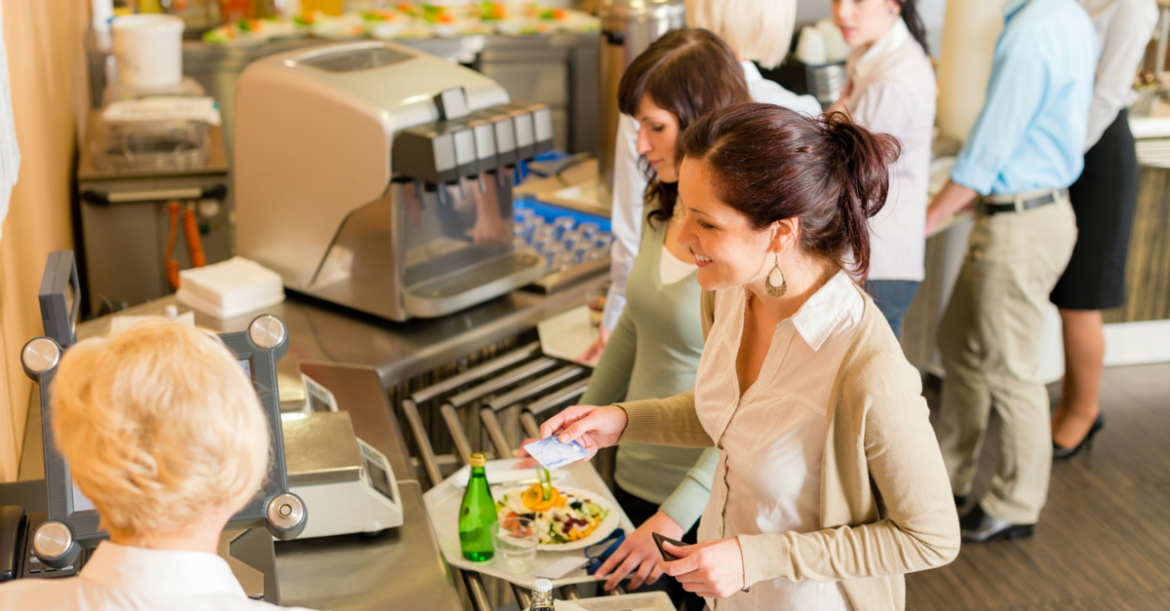Going to college is a transition in every aspect. First comes the transition to school. This consists of longer classes, harder homework and heavier textbooks. Then comes the transition to real life. This consists of no longer relying on your parents to help you complete everyday tasks a.k.a. washing your own clothes and cooking your own meals, or at least finding edible food to begin with.
Meal plans are a way to get around that, sort of. Having a meal plan means you can get by a little longer in life without having to cook food for yourself, but it also includes a massive smorgasbord of food, sometimes unhealthy food, every single day. More often than not this includes a mashed potato bar.
Step One: Skip the mashed potato bar
Sure, it looks appealing. It probably tastes delicious too, but no one needs that many carbs. When it comes to sides, portions are your best friends. Try looking at your plate as a pie chart split into three pieces. I mean hey, that statistics class has got to help you with something, right? When choosing food, have 50 percent of your plate be protein, 35 percent be vegetables and 15 percent be carbs. This way you’re not over loading up on the carbs, and making sure to get in a larger amount of healthy proteins and vegetables.
Step Two: Fried or Grilled?
When it comes to picking proteins, you’d be surprised at the amount of different meats that are offered in the cafeteria. Feel free to be adventurous, but don’t overload on the fried meats. Avoid getting fried chicken, fried shrimp, fried fish, etc. The grease and unhealthy fats will come at a cost, regardless of how satisfying it may seem. Instead, try opting out for a grilled chicken or piece of fish. Protein is important, but the leaner the protein, the healthier it is. Also, try avoiding meats drenched in cheese or sauces. This adds to the unneeded calories and sodium.
Step Three: Dessert anyone? Take the cake.
Let’s be honest, skipping dessert never works. When we deny our bodies certain cravings, the cravings can tend to get worse and result in even unhealthier options. Instead of depriving yourself of the chocolates, find something remotely healthy in the dessert section. Swaps are very important. Find something you want, then find the alternative to it. Craving ice cream? Get some fat-free frozen yogurt. Going crazy for chocolate? (We get it. Exams call for chocolate in any way shape or form.) Settle for the sugar-free chocolate pudding. While these aren’t the healthiest options, you’re not depriving your body of its cravings, nor are you overindulging.
Step Four: Keep it eco-friendly
Going to get water for dinner? Bring in your own water bottle. It’s allowed, plus there’s less waste of paper cups. Try using washable silverware and plates rather than choosing the carry out boxes. If there’s a chance of leftovers, bring a small Tupperware to dinner with you. That way, you won’t have to throw out the carry out box back in your dorm. Plus, this avoids any roommate drama over the smelly fish in the fridge.
Staying healthy and eco-friendly in college isn’t the easiest, but it isn’t impossible. Try out these four simple steps for a healthier and cleaner transitio. You can do it! Trust us, we have.
 Food
Food Farmers
Farmers Sustainable Living
Sustainable Living Living Planet
Living Planet News
News